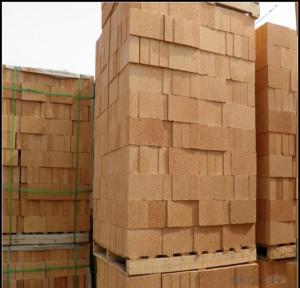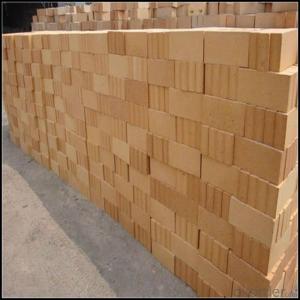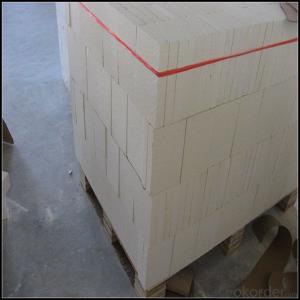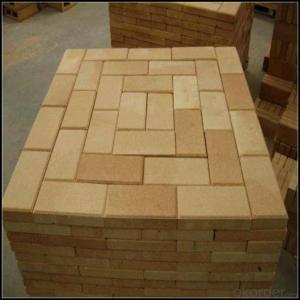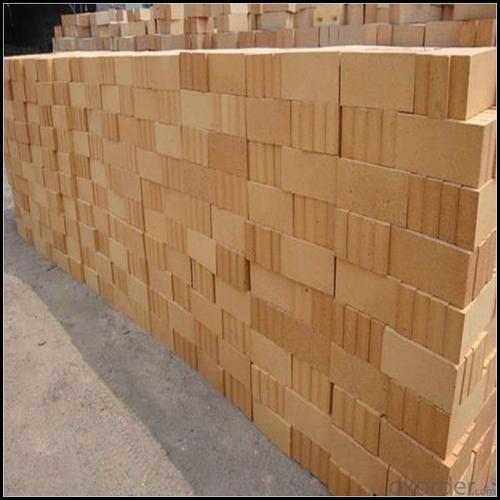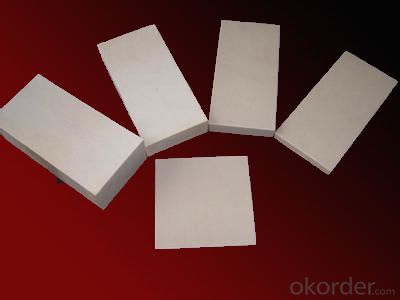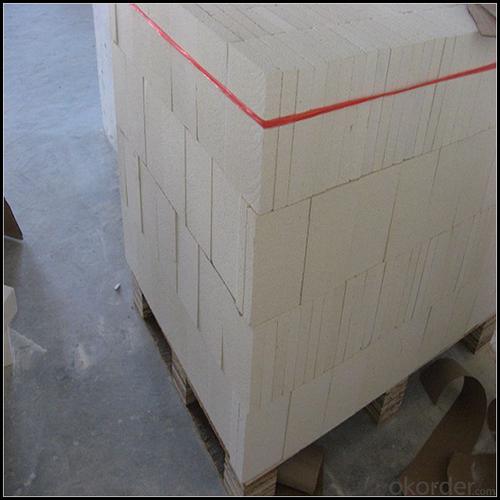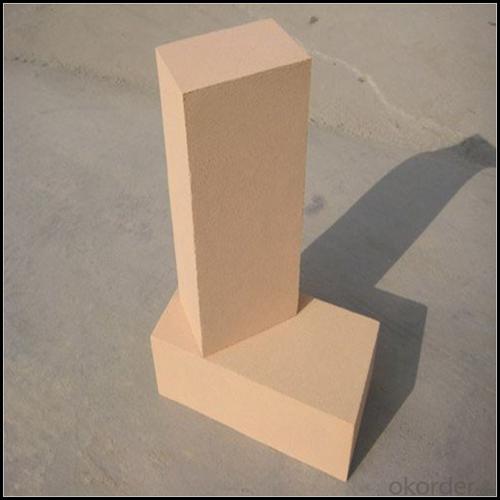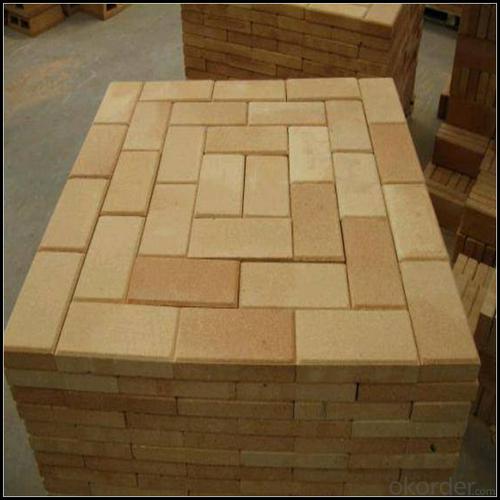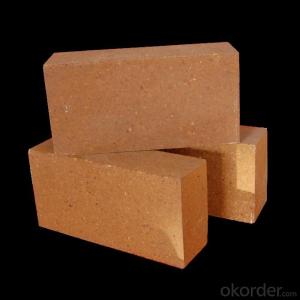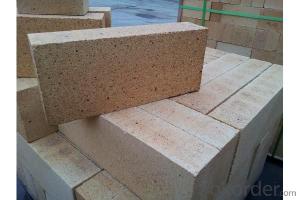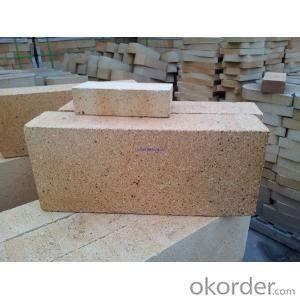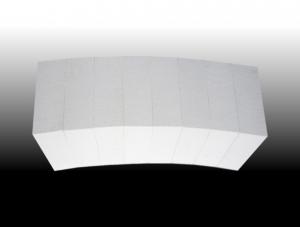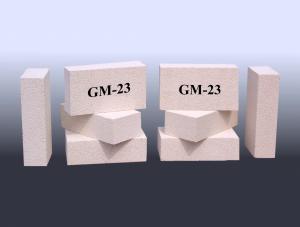Insulating Fire Brick for Glass, Steel Furnace, and Kilns
- Loading Port:
- China main port
- Payment Terms:
- TT OR LC
- Min Order Qty:
- 5 m.t
- Supply Capability:
- 800 m.t/month
OKorder Service Pledge
OKorder Financial Service
You Might Also Like
Refractory Brick
CMAX firebricks are classified under temperature between 1300℃ to 1700℃, manufactured from high purity alumina clay by mixing, press-forming, drying, sintering and machining. Bricks contain carefully-graded organic fillers which are burned out during sintering to give a uniform controllable pore structure. This technique makes product feature low thermal conductivity and excellent heat insulation
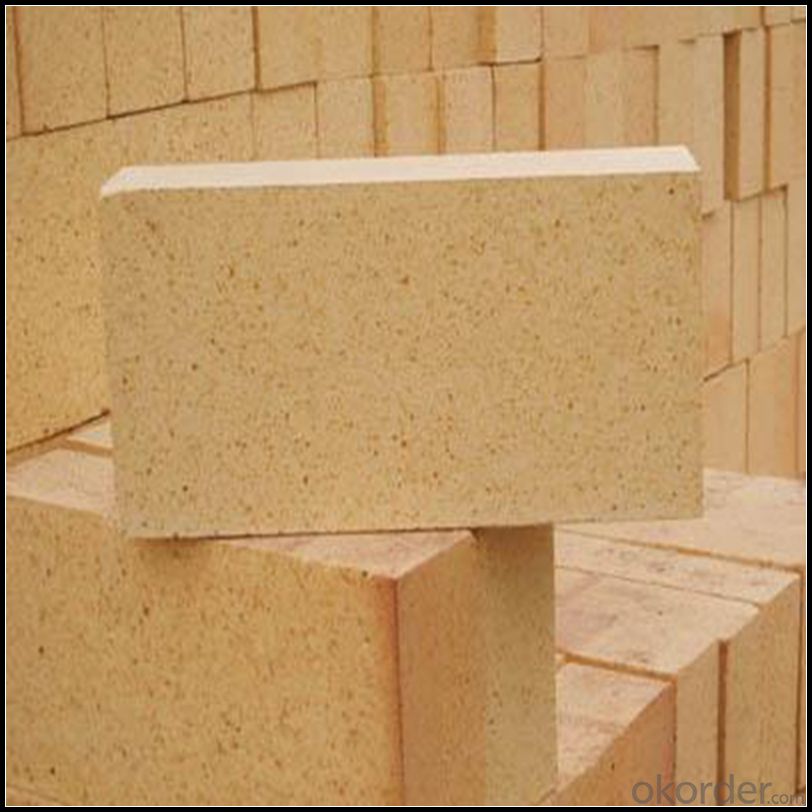
Features
a) Low thermal conductivity;
b) High refractoriness;
c) High mechanical strength;
d) Excellent thermal shock resistance;
e) Non standard sizes and shapes are available upon request.
Characteristices of high alumina brick
1. High intensity for pressure
2. Good thermal shock stability
3. Strong abrasion and corrosion resistance
4. High cold crushing strength
5. Excellent abrasion resistance at cold and hot conditions
Application
1.Building material industry,kiln,heating equipment and the inwall of high—temperature pipe line
2.Chemical industrial high temperature of reaction equipment inwall
3.Power plant ,gas turbine engine and heat insulation of unclear power
4.The fire proof of high—rise building
5.Furnace door of kiln
6.High-temperature filter material
Data Sheet
Classification Temperature (℉/℃) | 3000/1650 |
Bulk Density (g/cm3 ) | ≤1.0 |
Thermal Conductivity | |
800℃, W/m.K | ≤0.39 |
1000℃, W/m.K | ≤0.43 |
1200℃, W/m.K | ≤0.48 |
Reheating Linear Change (%) | 1550℃×12h |
≤0.9 | |
Chemical Composition (%) | |
Al2O3 | ≥75 |
Fe2O3 | ≤0.5 |
Packaging & Shipping
Packaging Details:Be packed in fumigated wooden pallets
Delivery Detail: 30 days after order

Our Services
Optimum solution and product supply of refractories for high temperature industries, such as iron steel, non-ferrous, petrochemical and building materials.
Engineering design, contract and consult for refractories, and civil architecture design.
Research, development, manufacture and sale of superhard materials.
R&D, manufacture and sale of special packing materials for export.
Inspection, supervision and arbitration of refractories.
Consultation and services in refractories information.
Training and cultivation of high-level talents in refractories profession
Sales Network

Company Information
CNBM (China National Building Material) Group is the largest comprehensive building materials group in China that in integrate scientific research, manufacturing and logistics into one entity. The largest building materials and equipment specialists in China. Upon State Council approval, today CNBM owned more than 300 subordinate manufacturing factories and servicing companies. There are 6 fully owned public listed companies and 11 partially owned with substantial shares public listed companies. In many of these fields, CNBM is playing the leading role in the building industry in the country.
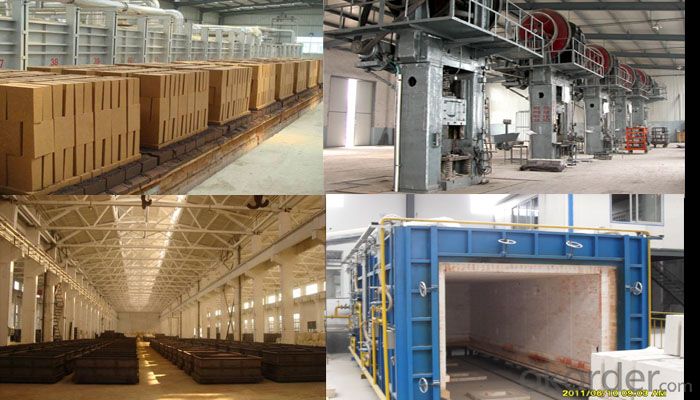
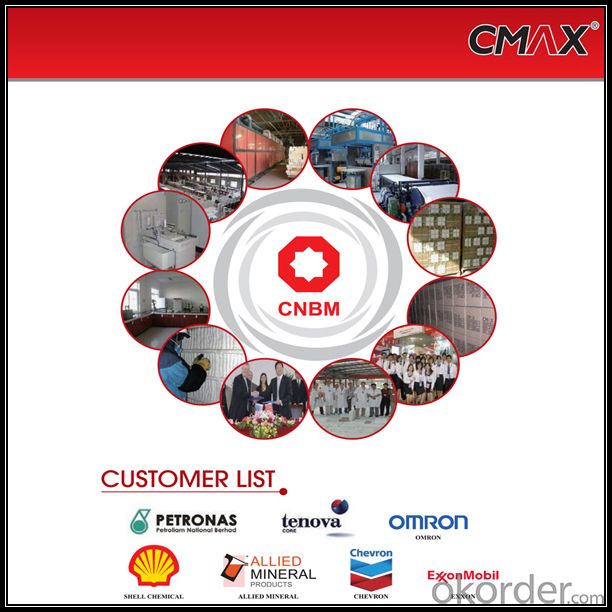
FAQ
1. Which products do you have?
We have all kinds of refractory brick, castable, mortar, cement, ceramic fiber products, etc.
Or you could browse our products to choose what you need.
2. Can you give me a brief introduction of the application of your products?
We are mainly specializing in the refractory materials in iron and steel, cement, glass, ceramics, petrochemical, electric power Industry, etc.
3. If I need your offer, what information do you need?
In order to choose suitable products, it will be appreciated to provide us the information, such us specification, technical data, order quantity, products application etc. If any question, please contact us freely.
- Q: Can insulating fire bricks be used in chimneys or flues?
- Insulating fire bricks are not recommended for use directly in chimneys or flues. While these bricks are designed to withstand high temperatures, they are primarily used for insulation purposes rather than as a structural component. Chimneys and flues require bricks that are specifically engineered to withstand the intense heat and corrosive byproducts of combustion. These bricks, known as refractory bricks, are designed to have high thermal resistance and exceptional durability to ensure the safe and efficient operation of the chimney or flue. Therefore, it is advisable to use refractory bricks instead of insulating fire bricks when constructing or repairing chimneys and flues.
- Q: Can insulating fire bricks be used in heat treatment furnaces?
- Yes, insulating fire bricks can be used in heat treatment furnaces. Insulating fire bricks are designed to withstand high temperatures and provide excellent insulation properties, making them suitable for use in heat treatment furnaces where high temperatures are required. These bricks help to retain heat, minimize energy loss, and ensure efficient heat distribution throughout the furnace, resulting in improved heat treatment processes.
- Q: Are insulating fire bricks resistant to salt attack?
- Yes, insulating fire bricks are generally resistant to salt attack. They have a high resistance to chemical reactions and can withstand exposure to salts without significant deterioration.
- Q: How do insulating fire bricks contribute to energy efficiency?
- Insulating fire bricks possess exceptional thermal resistance, rendering them an invaluable asset in energy-efficient systems. A key contribution of these bricks to energy efficiency lies in their ability to mitigate heat loss. With their low thermal conductivity, insulating fire bricks do not readily conduct heat, making them ideal for insulating areas with high temperatures, such as furnaces, kilns, and fireplaces. By curbing heat loss, insulating fire bricks effectively contain the generated heat within these systems, enabling them to function with enhanced efficiency. Moreover, insulating fire bricks aid in reducing energy consumption. By limiting heat transfer, they necessitate less energy to maintain the desired temperature within a system. This becomes especially significant in industries reliant on high temperatures for operations, as it translates into substantial energy savings. Companies that employ insulating fire bricks can consequently curtail their energy usage, leading to reduced utility bills and a diminished environmental impact. Furthermore, insulating fire bricks contribute to energy efficiency by elevating the overall performance of heating systems. By providing insulation, these bricks ensure a consistent and controlled temperature within the system. This guarantees even distribution of heat and eliminates energy wastage caused by temperature fluctuations. Consequently, systems equipped with insulating fire bricks operate with heightened efficiency and effectiveness. In conclusion, insulating fire bricks play a pivotal role in advancing energy efficiency. Their exceptional thermal resistance properties aid in minimizing heat loss, reducing energy consumption, and optimizing the performance of heating systems. By incorporating insulating fire bricks, individuals and industries can achieve significant energy savings while simultaneously fostering a greener and more sustainable approach to energy consumption.
- Q: Are insulating fire bricks resistant to cracking?
- Yes, insulating fire bricks are designed to be highly resistant to cracking. They are manufactured to withstand high temperatures and thermal shocks, ensuring their durability and preventing cracks from developing.
- Q: What are the different sizes available for insulating fire bricks?
- Different construction and insulation needs can be accommodated by insulating fire bricks of various sizes. The available sizes of these bricks may vary depending on the manufacturer and the project's specific requirements. Commonly found sizes include standard bricks measuring 9" x 4.5" x 2.5", which are widely used in residential and commercial applications. Smaller sizes like 9" x 4.5" x 1" or larger sizes such as 12" x 6" x 3" may also be obtainable. It should be noted that these sizes are merely examples and the actual dimensions can vary. To determine the specific sizes available for insulating fire bricks for your particular project, it is advisable to consult with the manufacturer or supplier.
- Q: What is the typical compressive strength of an insulating fire brick?
- The typical compressive strength of an insulating fire brick ranges from 1,000 to 3,000 pounds per square inch (psi).
- Q: Can insulating fire bricks be used in the construction of lime calciners?
- Yes, insulating fire bricks can be used in the construction of lime calciners. Lime calciners require high temperatures to produce lime, and insulating fire bricks are designed to withstand and retain heat. These bricks have low thermal conductivity, allowing them to effectively insulate the calciner and prevent heat loss. Additionally, insulating fire bricks are lightweight, making them easier to handle and install in the construction of lime calciners.
- Q: How much is a thermal brick?
- Insulation brick prices also have a great relationship with the material and workmanship, such as clay brick price is much lower than high alumina brick, mullite and corundum brick prices will be higher.
- Q: Are insulating fire bricks resistant to slag attack?
- Yes, insulating fire bricks are resistant to slag attack. These bricks are made of high-quality refractory materials that can withstand extreme temperatures and harsh conditions, including exposure to slag. They have low thermal conductivity and excellent insulation properties, making them ideal for applications where slag attack is a concern.
Send your message to us
Insulating Fire Brick for Glass, Steel Furnace, and Kilns
- Loading Port:
- China main port
- Payment Terms:
- TT OR LC
- Min Order Qty:
- 5 m.t
- Supply Capability:
- 800 m.t/month
OKorder Service Pledge
OKorder Financial Service
Similar products
Hot products
Hot Searches
Related keywords
